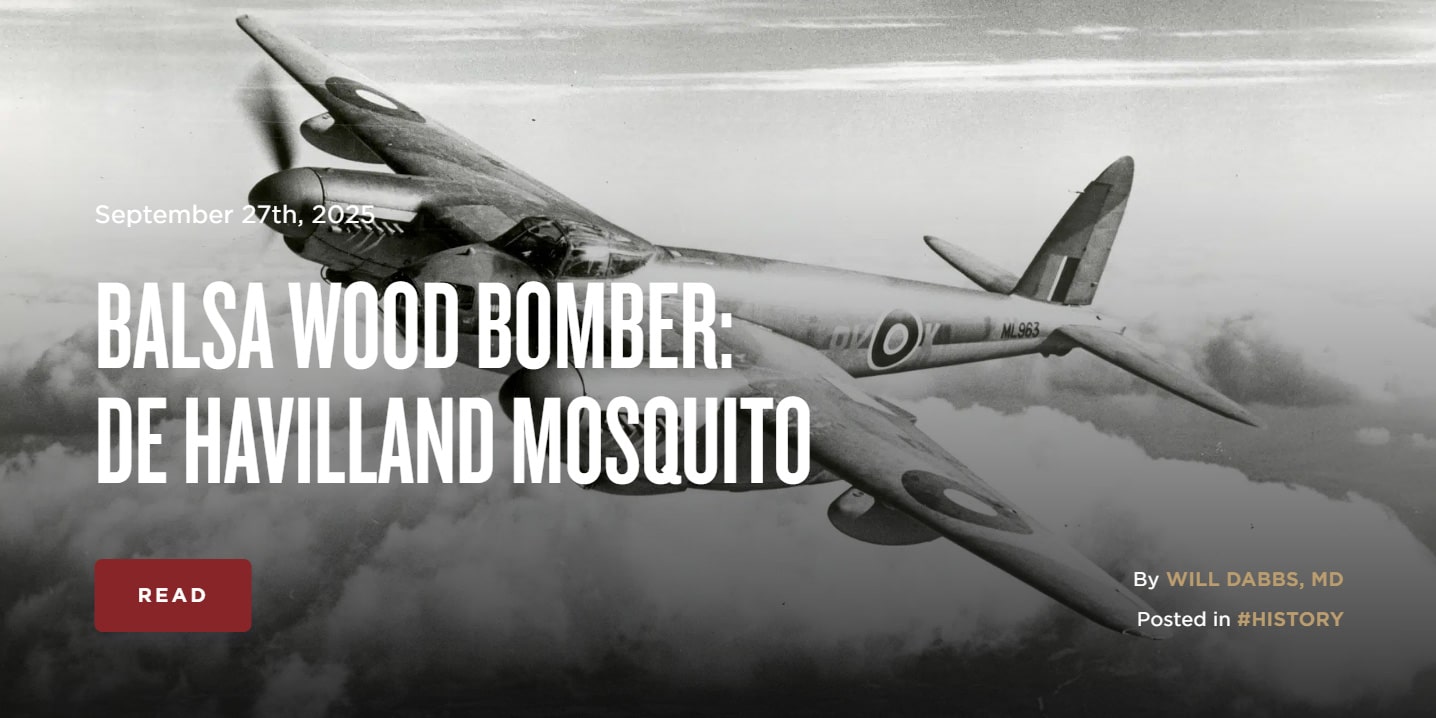Hello all, here is today's article posted on TheArmoryLife.com. It is titled “Balsa Wood Bomber: De Havilland Mosquito” and can be found at https://www.thearmorylife.com/de-havilland-mosquito-wooden-bomber/.



There is an old video from in cockpit of one cruising about the English countryside. The Merlins were well synch'ed and could be heard moving in and out of phase in the video, which was quite long.I'll bet they sound fantastic...
I really like 12-cylinder engines. I've heard a P-38 with twin-Merlins. I wonder if the counter-rotating props sound much different.There is an old video from in cockpit of one cruising about the English countryside. The Merlins were well synch'ed and could be heard moving in and out of phase in the video, which was quite long.
P-38's had twin Allison's as standard equipment. Different design than the Merlin.I really like 12-cylinder engines. I've heard a P-38 with twin-Merlins. I wonder if the counter-rotating props sound much different.
Gotta repeat that I'm a sucker for P-51s
Yep. Sorry. I had P-51s on the brain and I started thinking about the Allison-to-Merlin switch when I started wondering whether he had an Allison or a Merlin in the P-51 he crashed.The early P-51's (A model) had the Allison engine but not turbo-supercharged s the P-38 Allison's were, which muffled the engine noise. The Japanese called the P-38 the "Whistler Death" because they were so quiet.
The Brits figured out about fitting the Merlin into the P-51 and the rest was history with the "B" model being the first with the Merlin as standard equipment.
Both engines had their pluses & minuses.
The P-38 was there from beginning to end in WW2, while the P-38 really didn't show up until 1943.
I’m reading this article on my deck and a B26 and a Hellcat just flew over the house in a tight formation. I heard them coming before I saw them. Deep throaty sound and I knew I was in for a treat when they finally appeared over the house. That rumble those engines produce is beautiful. Must be an air show going on at one of the fields in the area.I'll bet they sound fantastic...
At one time I lived just West of Palomar Airport and at the time "Cinema Air" had a hangar there with ~15 warbirds quietly housed in a hangar there. Various private owners who maintained flyable examples. From time to time I'd hear them coming or already overhead. Sometimes a contact mechanic there would give me a call if he was prepping a bird for flight.I’m reading this article on my deck and a B26 and a Hellcat just flew over the house in a tight formation. I heard them coming before I saw them. Deep throaty sound and I knew I was in for a treat when they finally appeared over the house. That rumble those engines produce is beautiful. Must be an air show going on at one of the fields in the area.
Nice pic.The late "909" and I think "Diamond Lil" heading out over the Pacific from my Carlsbad apartment, mid '90s.
